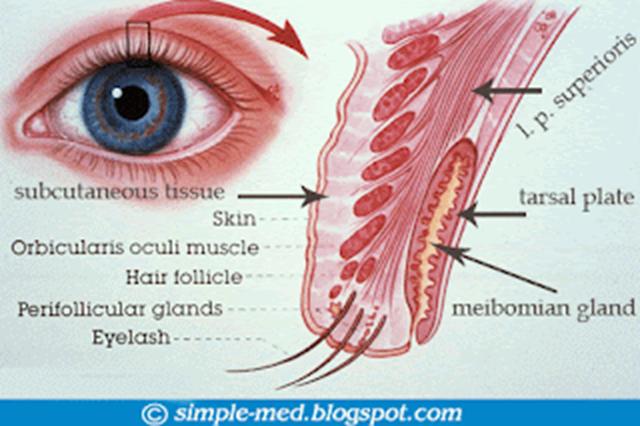
One of the most common causes of vision fluctuations is a specific type of dry eye that is a direct result of clogging of the tear glands that line the upper and lower eyelids. This type of dry eye is more common in younger patients and men than other etiologies. If you are having dryness and experiencing:
itching, redness, or irritation along your lash line
small white/yellow bumps along your lid
recurrent styes
thick, hazy tear film intermittently between blinks
suffer from rosacea
Then Meibomian Gland Dysfunction (or also called blepharitis!) is likely the culprit. Let's take a closer look at the anatomy of the lid to understand what is going on.
The meibomian glands are sebaceous (or oily secretion) glands that run vertically through the eyelids. Their opening is just inner to the eyelashes. The function of these glands is to secrete the oily "top coat" of the tears, that helps prevent the tears from evaporating off the eye. When the oily secretion is clogged inside the gland, the tear film is missing proper components and thus dries up very quickly, causing dry eye symptoms. If the glands are clogged and capped, their yellow dome-like contents may be visible along your lids when you look in the mirror.
Clogged Meibomian Glands: also called impacted or inspissated glands, or posterior blepharitis |
CAUSES: Meibomian gland dysfunction or blepharitis (inflammation along the eyelids) can be caused by dry skin or crusting along the lash line, poor gland secretion (typical with rosacea), staph bacteria (that normally is on our skin but can sometimes flare up), or hormone changes that affect the make-up of the glands and their secretions.
BLEPHARITIS: Scaly, crusty debris called "collarettes" hook onto the eyelashes, causing irritation, inflammation, a spike in staph bacteria count, and clogged meibomian glands! You wouldn't be able to see it in the mirror, so make sure when you clean your lids, you massage or gently rub along the lashes to get rid of this debris! TREATMENTS:
OTHER THINGS TO KNOW:
|








